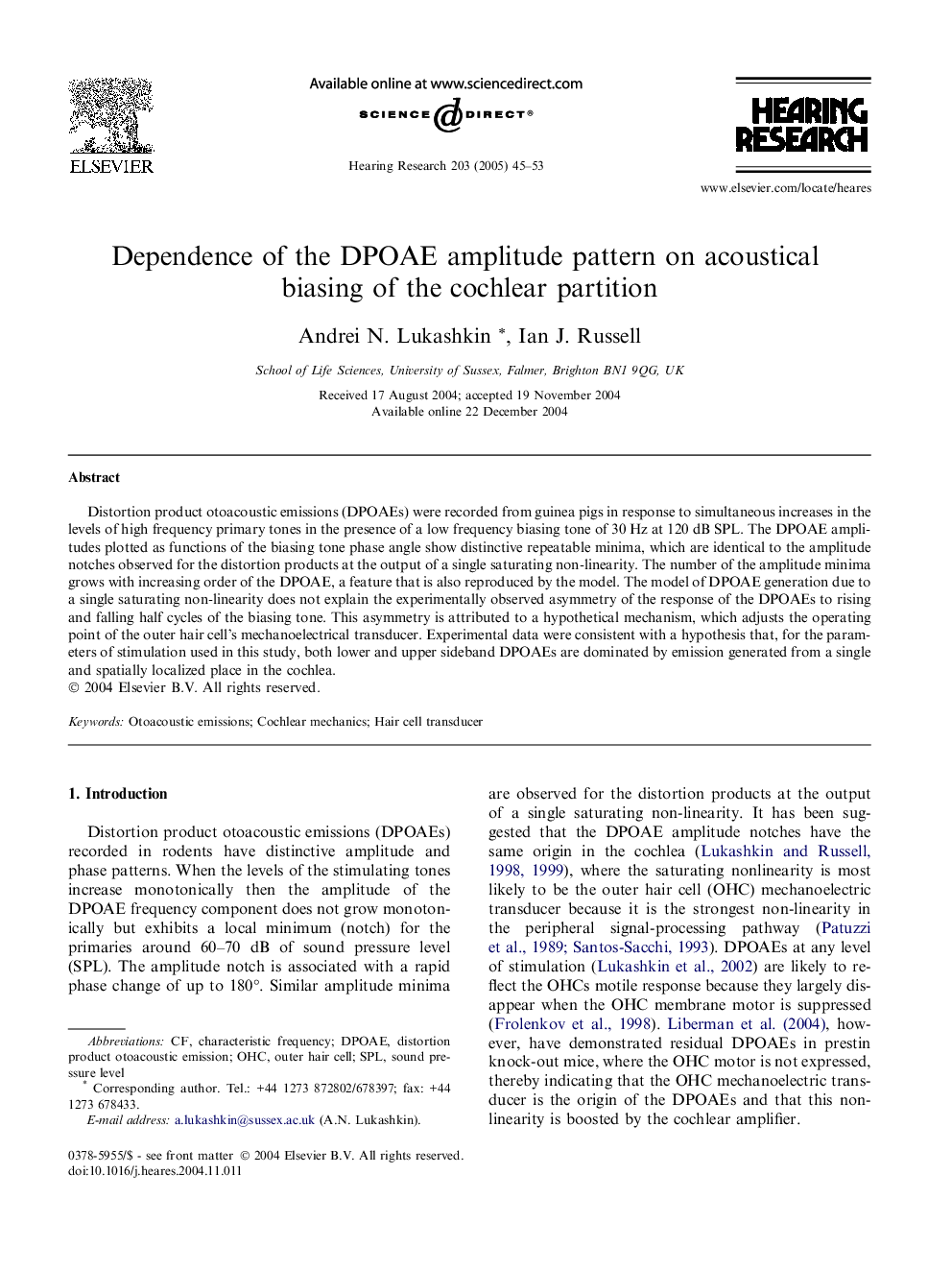| Article ID | Journal | Published Year | Pages | File Type |
|---|---|---|---|---|
| 9436631 | Hearing Research | 2005 | 9 Pages |
Abstract
Distortion product otoacoustic emissions (DPOAEs) were recorded from guinea pigs in response to simultaneous increases in the levels of high frequency primary tones in the presence of a low frequency biasing tone of 30 Hz at 120 dB SPL. The DPOAE amplitudes plotted as functions of the biasing tone phase angle show distinctive repeatable minima, which are identical to the amplitude notches observed for the distortion products at the output of a single saturating non-linearity. The number of the amplitude minima grows with increasing order of the DPOAE, a feature that is also reproduced by the model. The model of DPOAE generation due to a single saturating non-linearity does not explain the experimentally observed asymmetry of the response of the DPOAEs to rising and falling half cycles of the biasing tone. This asymmetry is attributed to a hypothetical mechanism, which adjusts the operating point of the outer hair cell's mechanoelectrical transducer. Experimental data were consistent with a hypothesis that, for the parameters of stimulation used in this study, both lower and upper sideband DPOAEs are dominated by emission generated from a single and spatially localized place in the cochlea.
Keywords
Related Topics
Life Sciences
Neuroscience
Sensory Systems
Authors
Andrei N. Lukashkin, Ian J. Russell,
